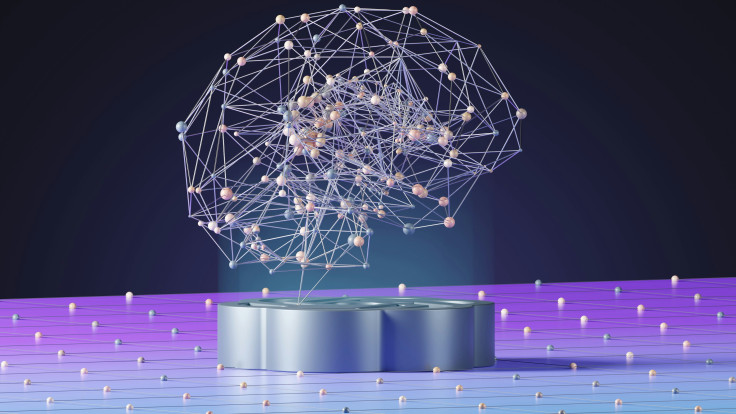Arnie AI from Arnica Aims to Bring Order to the Chaos of AI-Generated Code
AI Writes Code—Arnie AI Keeps It Safe

As AI systems begin writing and refactoring enterprise software, the security risks are mounting faster than most organisations can react. The same generative tools that help developers move at record speed—GitHub Copilot, Claude, Gemini, and others—are also producing code with unseen vulnerabilities. Into this gap steps Arnica, a company betting that software security will have to evolve just as quickly as the code itself.
The Atlanta-based firm this week introduced Arnie AI, a new suite built to safeguard software written by humans and by machines. Designed for organisations already using AI to generate or augment production code, Arnie combines continuous analysis with real-time rule enforcement, effectively embedding governance inside the development process rather than layering it on top.
AI Is Changing How Software Gets Built
Most enterprises are still using security models built for the human development era; manual reviews, delayed scans, and audit-driven controls. But the nature of coding is changing. AI agents now generate functions, fix bugs, and even modify live codebases automatically. They work at a speed that far exceeds traditional review processes.
This shift is creating a new form of technical debt: code that looks right syntactically but contains logic errors, insecure defaults, or compliance violations invisible to a model trained primarily for performance. Adding model-level safeguards isn't simple; it requires more processing power and greater cost per token, something that few customers are willing to absorb.
The result, according to Arnica's research, is an emerging class of 'AI-induced vulnerabilities.' These are not bugs from negligence, but from automation; where an AI makes a change that passes every functional test but violates security policy.
Building Guardrails That Move at Machine Speed
Arnie AI addresses this by bringing two layers of protection directly into the workflow.
The first, AI SAST, is a continuous static analysis engine that identifies risks across repositories as code is written or merged. Unlike older tools that wait for builds to complete, it evaluates every push or pull request in real time. The system blends deterministic rule checking with adaptive AI logic, allowing it to understand developer intent and suggest targeted fixes without flooding teams with false positives.
The second, Agentic Rules Enforcer, goes one step further. It codifies an organisation's secure-coding standards—such as OWASP ASVS or NIST guidelines—and embeds them inside each repository. Whenever a developer or AI assistant generates code that violates those standards, the Enforcer blocks the commit instantly.
Because it operates outside the continuous-integration pipeline, enforcement happens automatically, without requiring developer opt-in. Arnica calls this 'pipelineless security,' meaning guardrails are always active, even when code is being generated autonomously.
The Business Case for Embedded Security
From a business standpoint, the shift is significant. Software executives and CISOs have been balancing a difficult trade-off: adopt AI-driven development for efficiency, or risk expanding the attack surface. Both paths have consequences.
With Arnie AI, Arnica is pitching a middle ground; speed without loss of control. By integrating security at the moment of code creation, organisations can reduce remediation backlogs, lower mean time to resolution, and satisfy compliance requirements without halting innovation.
'AI is rewriting the rules of software development. At Arnica, we believe security must evolve just as fast,' said Nir Valtman, CEO at Arnica. 'With AI SAST and the Agentic Rules Enforcer, we're giving organisations the ability to align velocity with trust, embedding security directly into both human-written and AI-generated code.'
Industry analysts see the timing as strategic. 'As AI systems increasingly write and modify production code, the industry is confronting a new kind of security gap -- one born not of human error, but of machine speed,' said Tyler Shields, Principal Analyst at Omdia. 'Solutions like Arnica's Arnie AI that proactively secure AI-generated code represent the next frontier in application security, where policy enforcement and continuous validation must evolve to match the scale and autonomy of agentic development.'
A Market Ready for Redefinition
Market data supports the urgency. IDC estimates that by 2028, more than half of enterprise software engineering teams will be actively building LLM-based features into applications. Meanwhile, Gartner forecasts that AI code assistants will become standard across 75% of enterprise development teams within three years.
For vendors, that means the addressable market for AI-aware security tools is expanding exponentially. For enterprises, it signals that traditional 'bolt-on' security won't scale.
Arnica's approach is one of the first attempts to translate secure development lifecycle (SDLC) practices into a continuous, AI-aware environment. By blending policy enforcement, static analysis, and developer-native workflows, the company hopes to give organisations something that has been largely missing in the agentic era: predictable, auditable control.
Looking Ahead
For now, Arnie AI represents a technical answer to a growing organisational problem -- how to keep governance aligned with innovation. But longer term, it hints at a broader industry transformation.
In the same way that DevOps merged development and operations, Arnie AI points to a future where AI and security are inseparable layers of the software supply chain. If that future materialises, enterprises will need tools that treat compliance not as a checkpoint but as a continuous, automated process woven into every commit.
Arnica's bet is that businesses will pay for that kind of assurance. And given the speed at which AI is learning to code, it may not be a bet at all -- it may be a necessity.
© Copyright IBTimes 2025. All rights reserved.





















